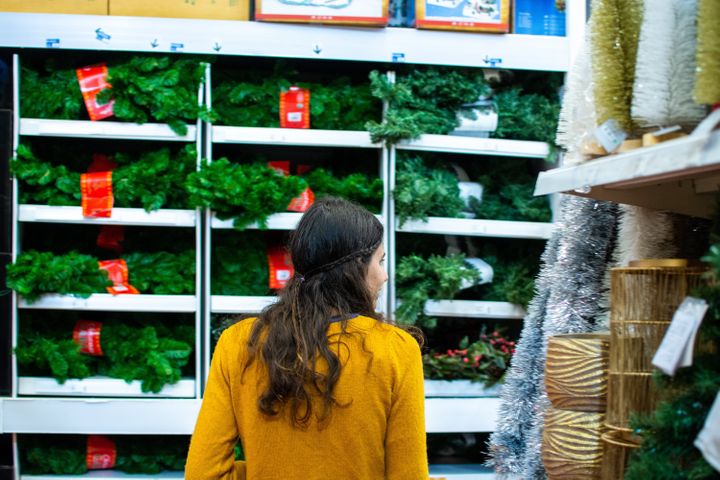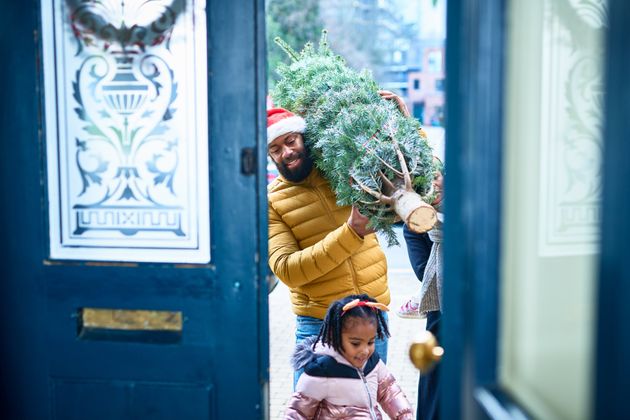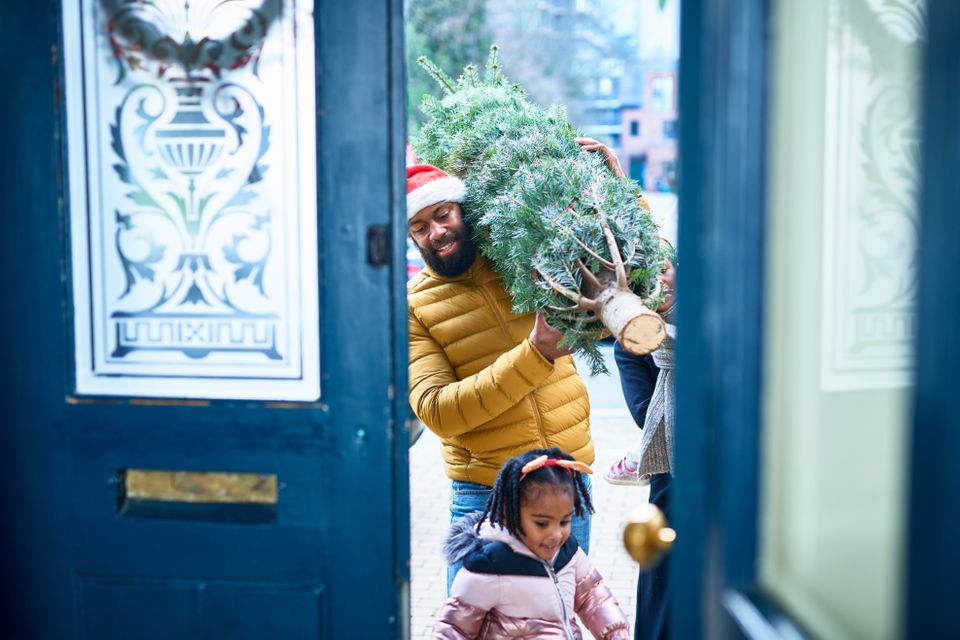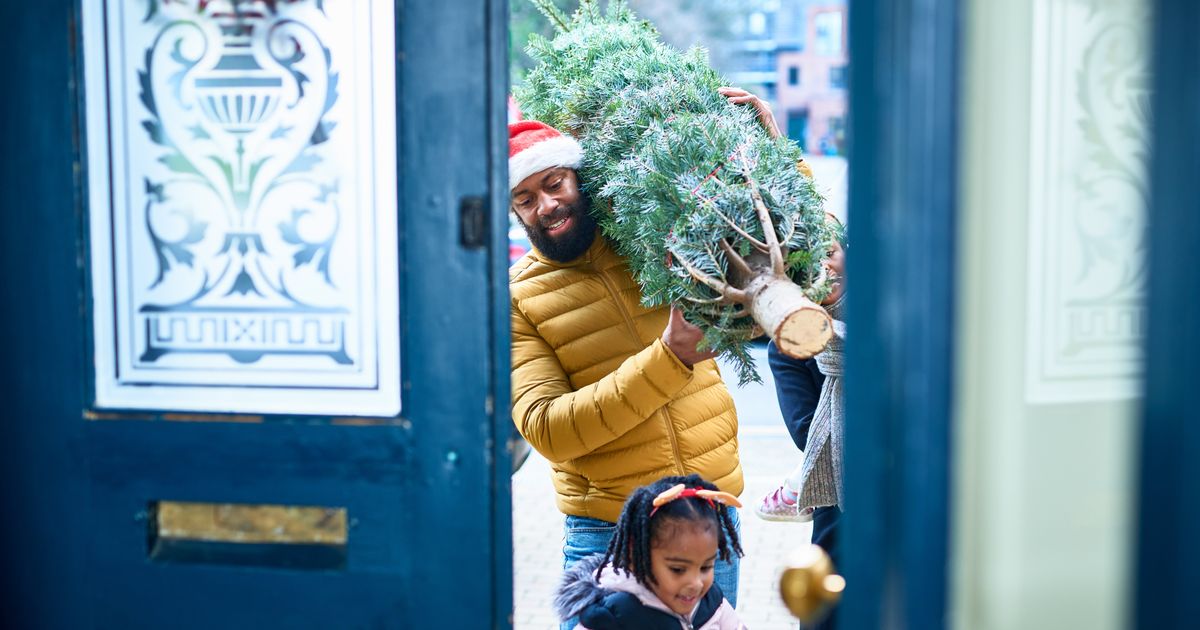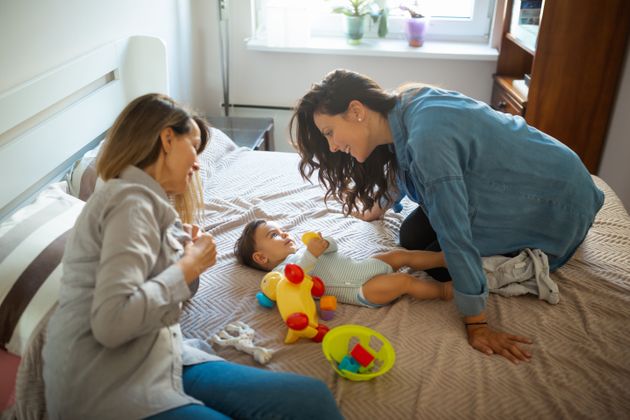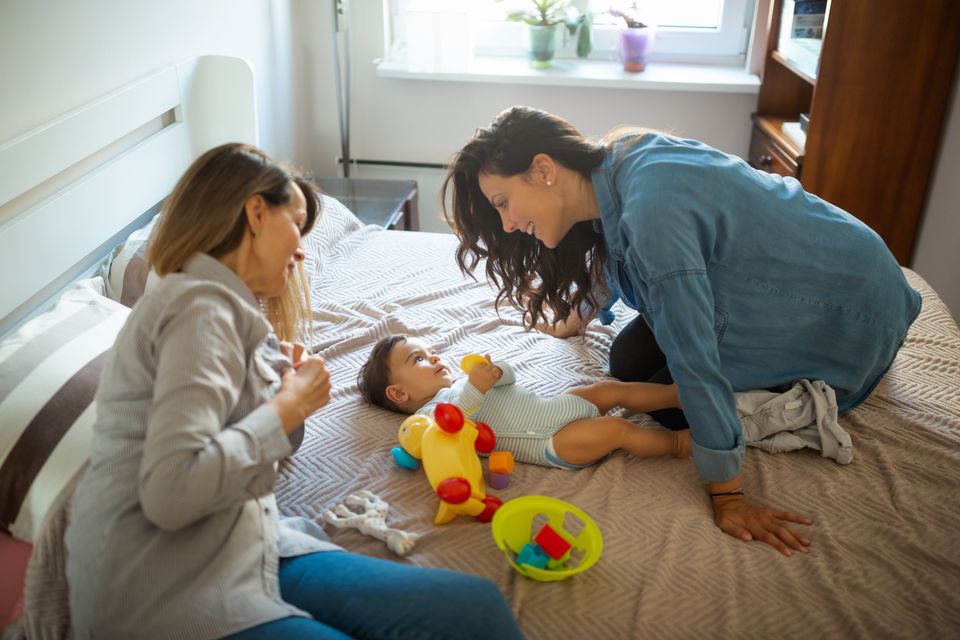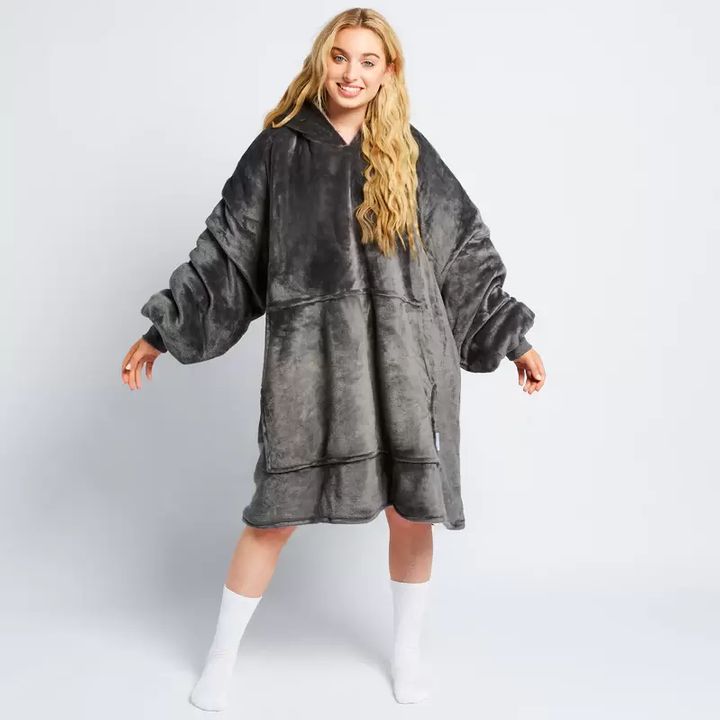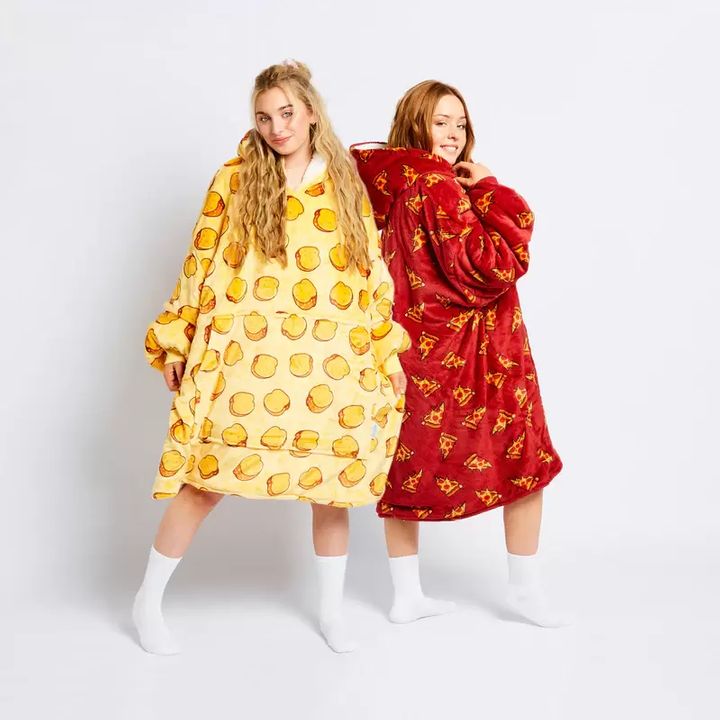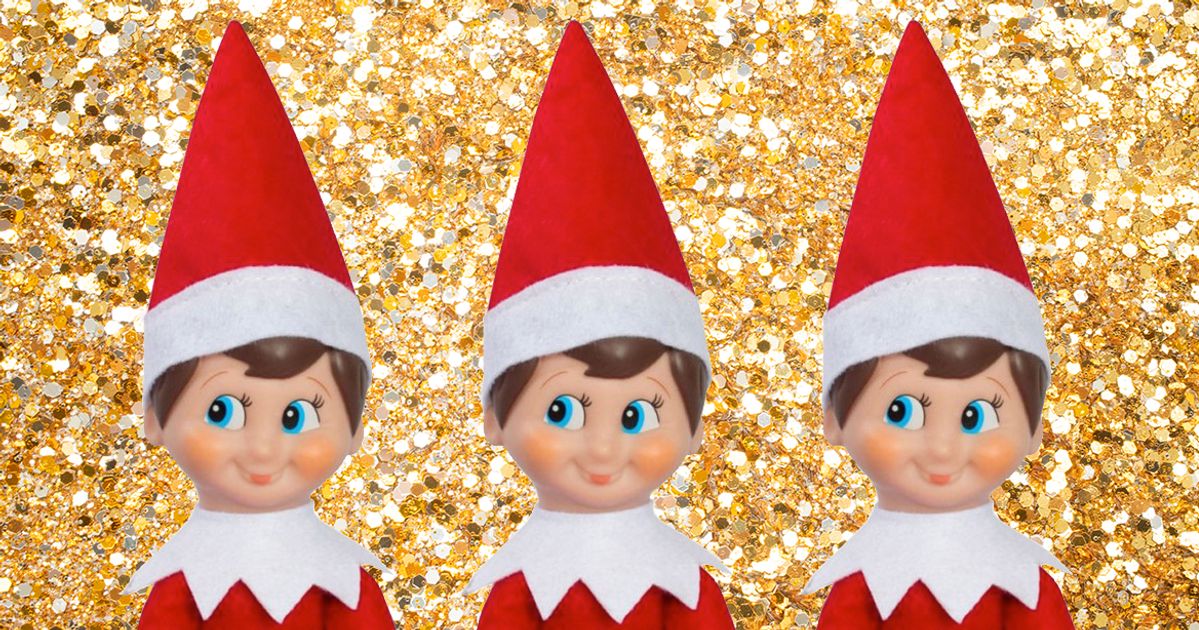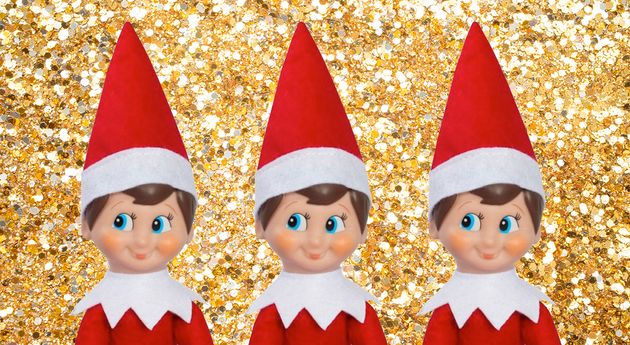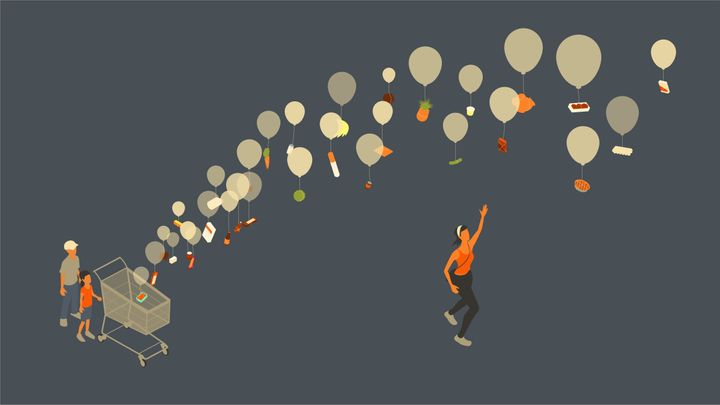If you’ve been making eyes at your co-worker all year, the office Christmas party can represent the perfect opportunity to shoot your shot. But you do, inevitably, need to proceed with caution. Nobody wants to be that person pulled in to see HR on Monday morning.
Still, a snog by the cloakroom can lead to far more than water cooler gossip. Below, we chat to two couples who hooked up at the Christmas party and found longterm love.
Advertisement
If these stories get turned into a Netflix romcom next year, you read them here first.
“He said ‘I have to get my anorak’ and I was like ‘Oh god.’”
Zoe Burke, 31, met her partner, Simon, 45, when they both worked for a media publishing company. Zoe worked in editorial while Simon worked in IT. They had their first snog six years ago at the Christmas party in London’s Cafe De Paris and now live together in Whitton, Twickenham, with their daughter. Zoe, who is editor at wedding website Hitched.co.uk, tells their story.

“We had chemistry from the first moment we met – although I was seeing someone else so nothing happened. Also he was so comically the opposite of my usual type – I tended to go for creatives who were always skint but were free spirits. He was a single dad of two who oversaw IT operations for a huge company and was 14 years older than me.
“It was a running joke in our office because it was so ridiculous, but we got on SO well. By summer I was single and dating but nothing really happened until we got into the Christmas period and the Xmas party was looming and our flirting ramped up a bit.
Advertisement
“I have never put so much effort into getting ready for a party! And I didn’t see him all night! I was about to leave and my boss was like ‘he’s at the bar!’ So I went over and it was all very sweet and innocent – there was no kissing, nothing like that, he put an arm around me but that was it.
“I remember when we left we did it separately and he said ‘I have to get my anorak’ and I was like ‘oh god’. But then we met round the corner, kissed for the first time and have been together ever since!
“Me and ‘the IT guy’ is still a running joke at work, but I don’t mind so much as it’s now been six years, and we have a daughter together now too. While I might be all about weddings in my working life, we have no plans to get hitched ourselves any time soon ― even though it comes up in conversation a LOT!”
‘We did keep it a secret in the office for a month.’
Tom Bourlet, 35, and his financée Raquel, 33, recently got engaged surrounded by 32 dogs at the Golden Retriever Experience (yes, we’re jealous too). The couple, who are based in Burgess Hill, work for the party planning company Fizzbox, so they know a thing or two about hosting a good knees-up. Still, their Christmas party was more memorable than most. Tom tells their story.
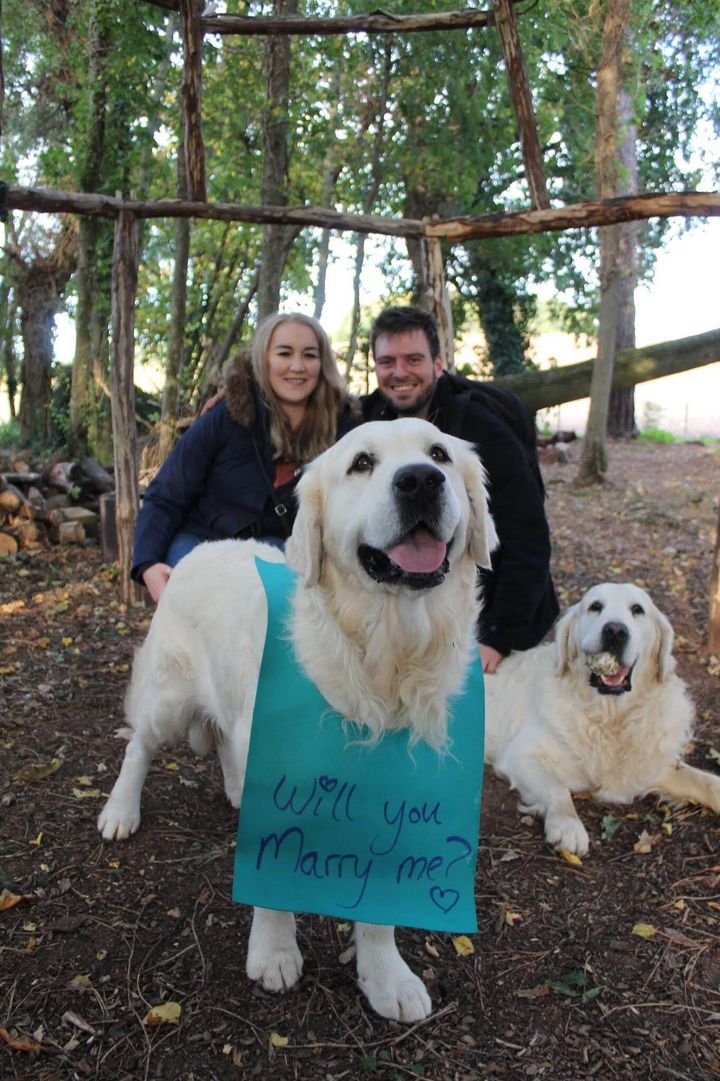
Tom Bourlet
Advertisement
“We worked together for around a year before the Fizzbox Christmas party; she worked in the finance department and I worked in marketing. I used to get Degustabox deliveries [a food subscription service] to the office, and would offer around the snacks to people in the office slowly making my way over to Raquel, before using it as an excuse to have a chat with her. We also went on a work trip to Bournemouth, where we instantly bonded, sitting next to each other on the coach over.
“We mentioned much later that we both secretly fancied each other, but tried ‘playing it cool’, but the Christmas party was the point in which we got to sit next to each other with some prosecco and the rest was history.
“I think there is always a worry the next day if alcohol has been involved. I worry if I said something stupid, whether I came across well and whether she was actually interested in me or whether that was the booze talking. It was also on a Friday, so we didn’t see each other until the Monday, so [there were] a few nervy days where we sent the occasional message to each other, but nothing in-depth.
“Fortunately, as soon as I saw her on Monday, we were joking around like normal, so all awkwardness was gone away, and we then arranged to go for some drinks that evening.
“We did keep it a secret in the office for a month, however one of our colleagues saw us in the bar down the road from the office after work. It quickly spread around the office soon after this. I then went up to the CEO to let him know I was dating someone in the office, I was in a managerial role so I wanted to make sure I wasn’t breaking any HR rules at all. He was very understanding and happy for me, pointing out that a number of office relationships had led to marriages.
Advertisement
“It seems funny to think how nervous I was going up to her, trying to think what to say and making silly conversations about our love for Babybels. The office Christmas party certainly helped to get us both out of the office and in a more relaxed environment, so I can thank the party for the amazing relationship I’m in.
“Five and a half years on, I love her more with every day and soon I’ll be able to call her my wife. We also bought our a house together in August, while we got a puppy a month ago, our fur baby!”






